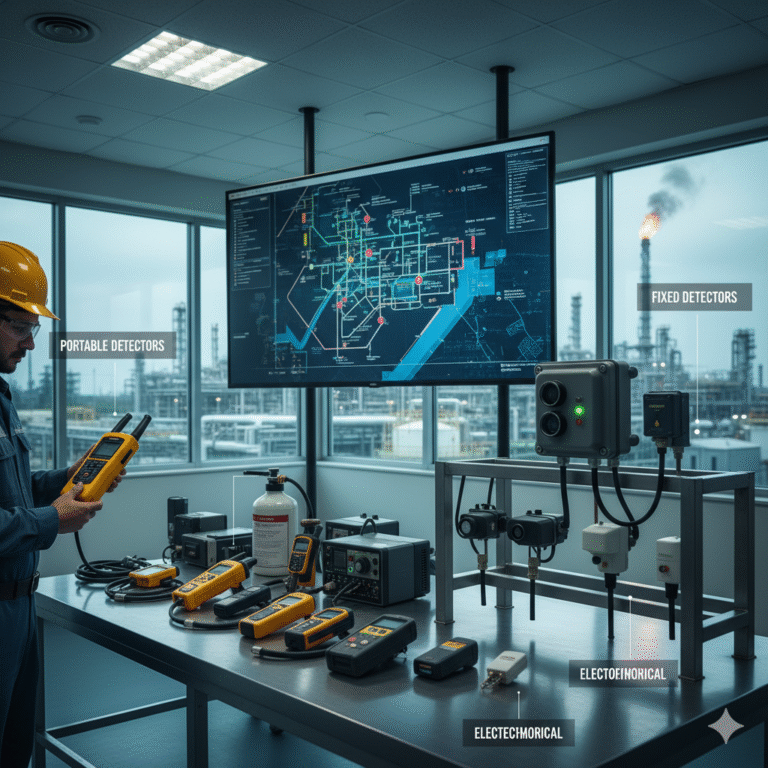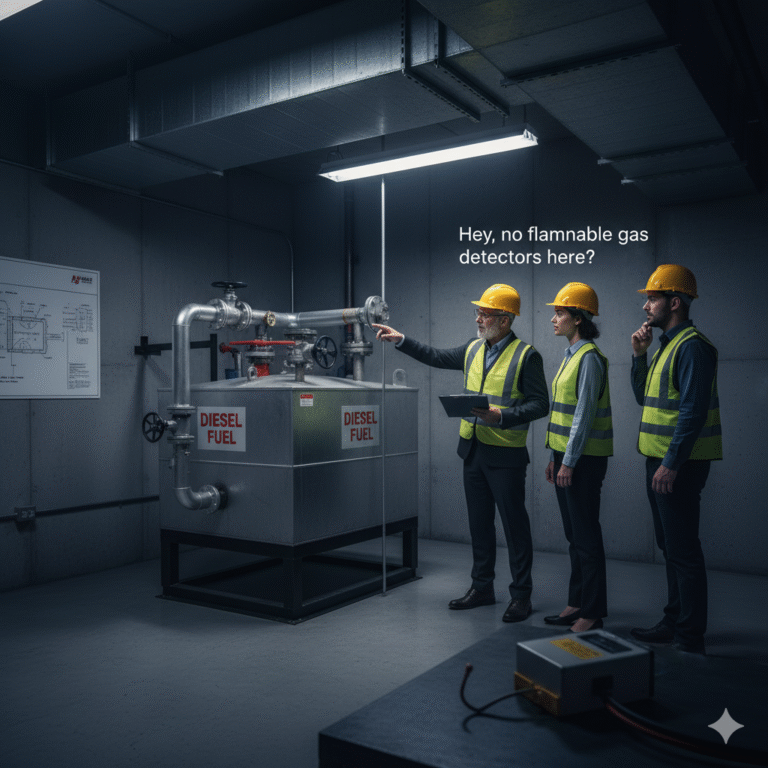During safety inspections, many companies encounter a troubling scenario: the combustible gas detectors installed in the field do not match the actual gas that could leak. What makes the situation even more challenging is that this discrepancy is often classified as a major safety hazard. Rectifying it can be costly and difficult. So, can gas detectors that do not match the gas leakage actually be used? Is this selection error a major safety hazard? Let’s analyze this issue.
Common Issue: Mismatch Between Gas Detectors and Leaked Gases
In safety checks, a common issue is the mismatch between the installed combustible gas detector and the gas it is supposed to detect. For instance, a methane detector may be installed in an area where gasoline is leaking, which can be flagged as a major safety hazard. Correcting this can be expensive and difficult for companies. But is it truly a major safety issue if the detector does not match the leaking gas? Here is an analysis.

How Catalytic Combustion Sensors Work
Catalytic combustion sensors are the most commonly used, low-cost combustible gas detectors. They consist of a sensing element and a compensating element. Under normal conditions, a current is applied to the platinum coil, maintaining a high temperature of 450-500°C. When combustible gas is detected, a catalytic combustion reaction occurs in the sensing element, raising the temperature of the platinum coil. This resistance change is measured precisely through a Wheatstone bridge, which allows the gas concentration to be calculated.
In simpler terms, catalytic combustion detectors measure the Lower Explosive Limit (LEL) of combustible gases by utilizing the heat generated from combustion inside the detector. Since different gases have different calorific values, the heat produced by the combustion of gases at the same volume will vary. If the sensor used in the field is mismatched with the leaking gas, the readings will likely have a deviation. The question is: will the reading be too high or too low? And can the readings still meet safety standards? We need to perform specific calculations to find out.

Combustible Gas Heat Value Chart
Below is a chart showing the calorific value of various common gases at 100% LEL (Lower Explosive Limit) concentration during combustion. Note: The LEL varies with factors such as environmental temperature and pressure.
By understanding this principle and referring to the heat value chart, it is easy to calculate the measurement error caused by a sensor mismatch.
For example:
Propane-calibrated detector installed in a methane leakage area: When the detector shows 100% LEL, the actual methane leakage is 87% LEL (underrated).
Propane-calibrated detector installed in an ethylene leakage area: When the detector shows 100% LEL, the actual methane leakage is 79% LEL (overrated).
Methane-calibrated detector installed in a propane leakage area: When the detector shows 100% LEL, the actual methane leakage is 115% LEL (overrated).
Methane-calibrated detector installed in an isobutane leakage area: When the detector shows 100% LEL, the actual methane leakage is 123% LEL (overrated).
Methane-calibrated detector installed in an ethanol leakage area: When the detector shows 100% LEL, the actual methane leakage is 116% LEL (overrated).
Methane-calibrated detector installed in a methanol leakage area: When the detector shows 100% LEL, the actual methane leakage is 101% LEL (overrated).

What Does This Mean for Safety?
If the readings are too high, the alarm will go off sooner, and from a safety perspective, this may not be a major issue. However, if the readings are too low, and exceed the maximum allowable error of the combustible gas detector, it is recommended to replace the detector.
Based on the calculation data, common gas selection errors generally do not affect the alarm function, and therefore do not pose a significant safety hazard.
When Is Calibration Necessary?
Another question arises: if a methane detector is installed in a propane leak environment, and the calibration gas used is also propane, is this acceptable? The answer is yes. However, calibration and verification by measurement organizations or companies can be difficult, and manufacturers’ assistance is required to complete the calibration.

Conclusion
While gas detector selection errors generally do not cause significant safety hazards, they can lead to inaccurate measurements that may result in delayed or premature alarms. In cases where the readings are outside acceptable limits, detectors should be replaced to ensure safety. By understanding the relationship between different gases and their calorific values, companies can make informed decisions on detector installation and calibration.
